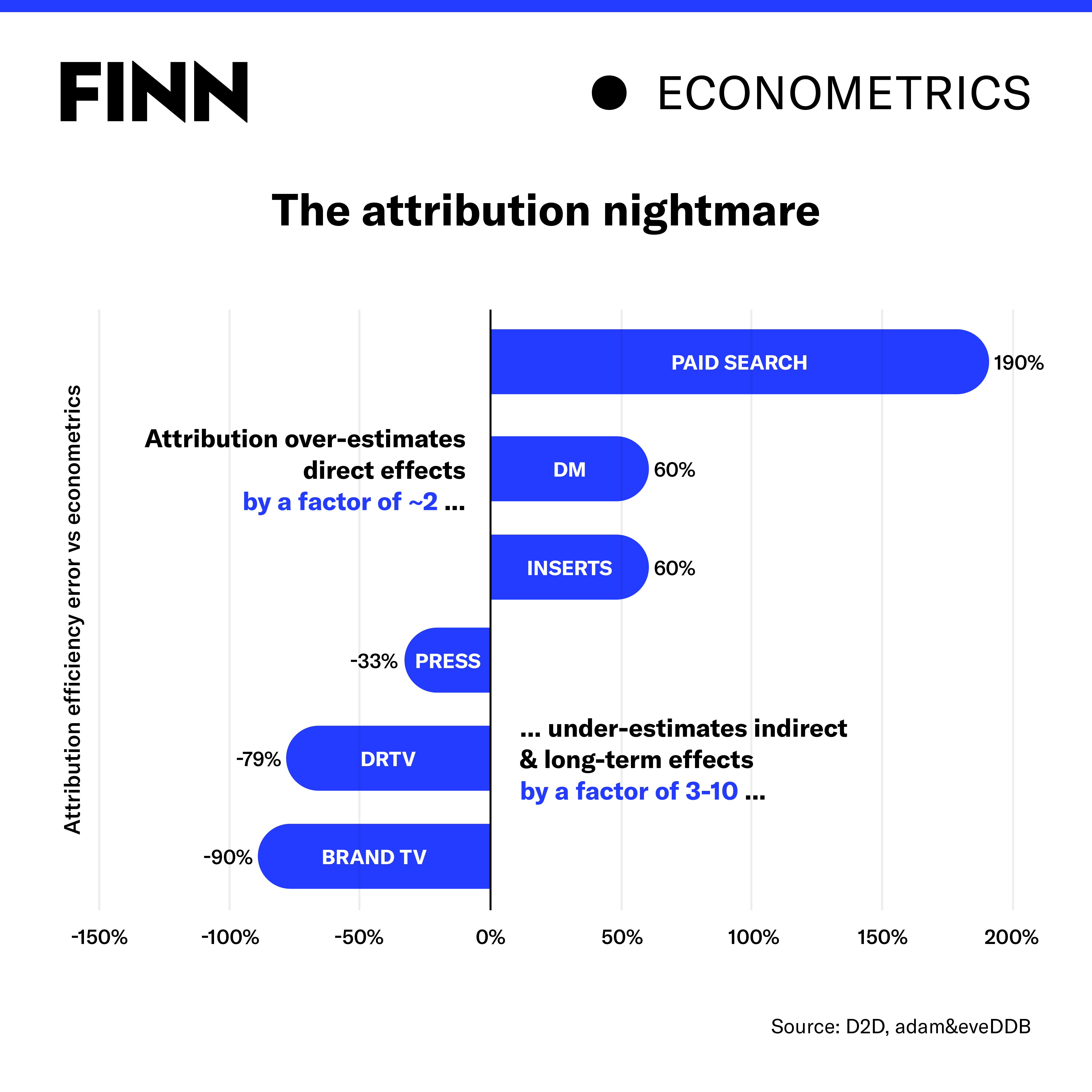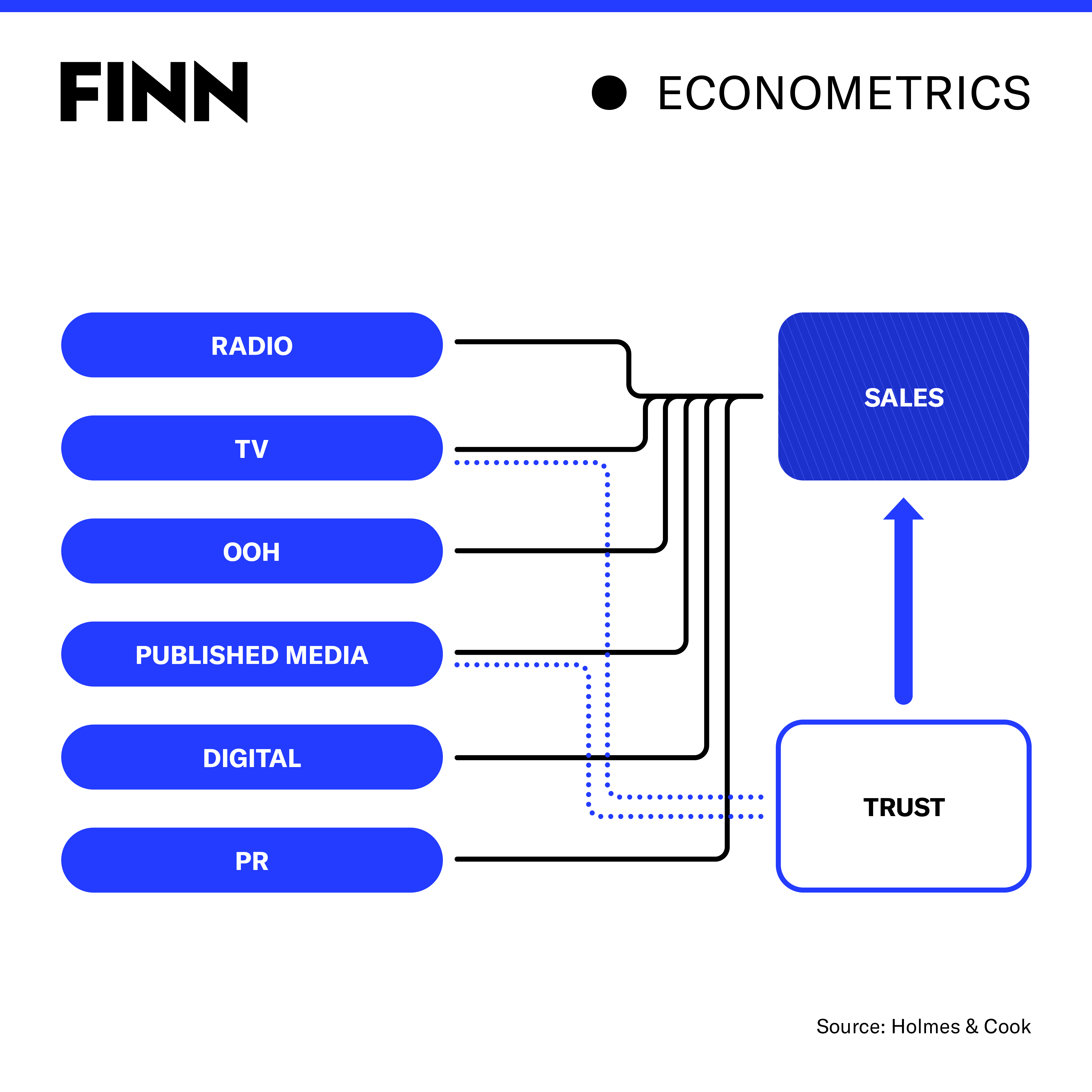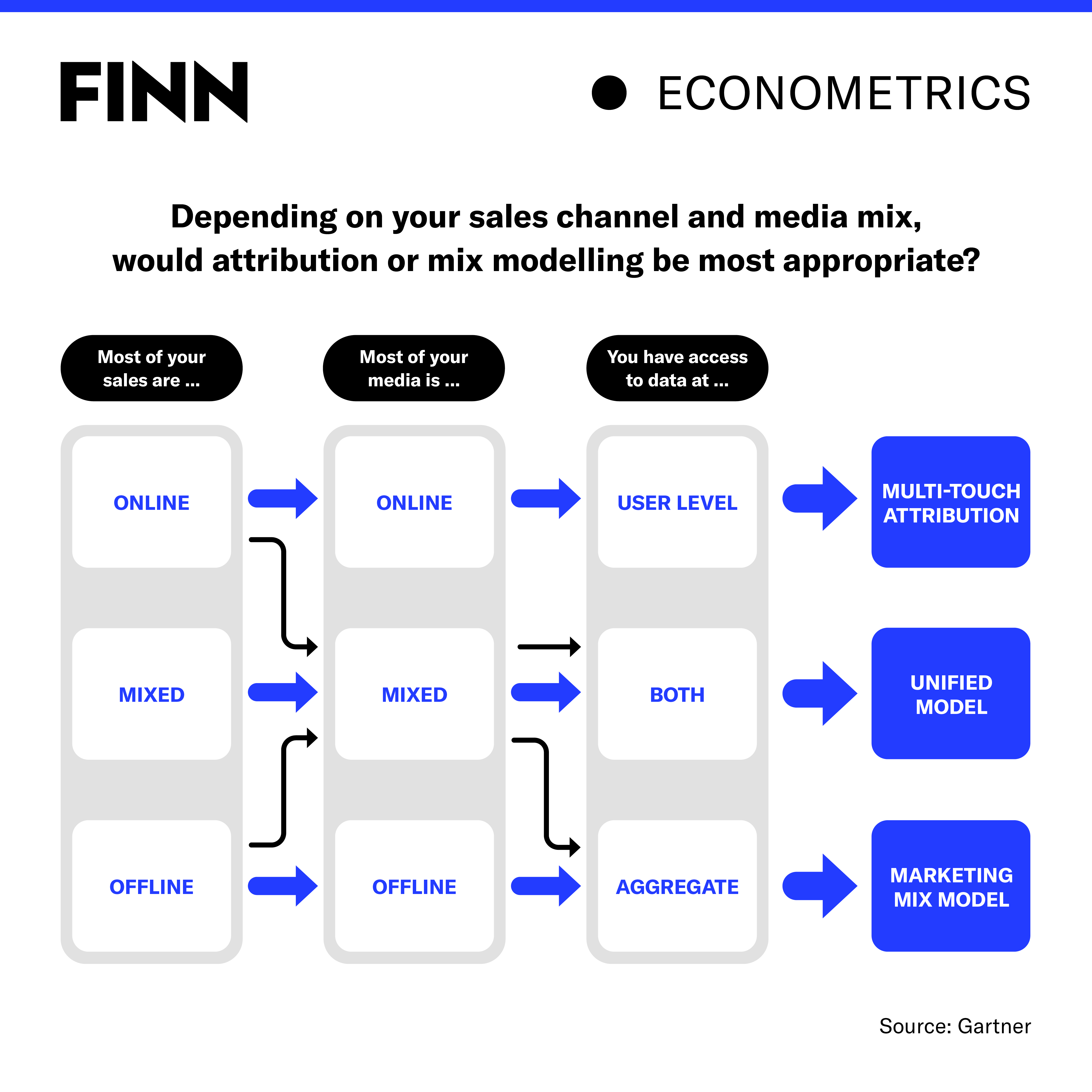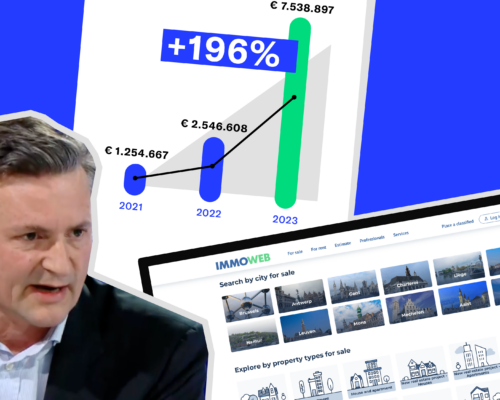Does this sound familiar? For your digital marketing, you have an attribution model (also known as “our funnel”). Reporting on organic social media remains limited to reach and number of followers. Your PR reporting is limited to the number of media appearances you can obtain each year, possibly supplemented with reach and/or AVE (advertising value equivalent)
Because of this fragmentation, you have no visibility into the return on investment of different marketing channels – and even less into the influence they have on each other. For example, do you know if it helps to launch a PR campaign when you start a major TV advertising wave?

If this is you, you are certainly not alone. Many organizations today struggle to connect their marketing efforts across different channels to leads or sales. It’s one of the major challenges in an omnichannel marketing world, according to marketing professor Els Breugelmans of KU Leuven.
Els Breugelmans: “Attribution remains a huge challenge in omnichannel marketing. Which marketing activity – which customer contact – has ultimately led to the conversion and purchase?”
Why the attribution model fails for omnichannel marketing
Because of this, many CEOs and marketing professionals are fans of the attribution model and by extension, of digital marketing. Because: in the digital funnel, at least everything seems measurable, from the first search to the final order.
“In the digital funnel, everything seems measurable – every click, from the first search to the order”
This is not without risk, says Les Binet, the specialist in marketing effectiveness. Due to the attribution model, your digital marketing efforts claim a lot of credit for marketing success – at the expense of other activities such as PR and TV advertising. As Binet puts it: the model overestimates direct marketing activities and underestimates indirect and long-term effects on the brand, which are vital for your sales.
According to Binet, attribution is “a nightmare”.

Els Breugelmans: “Correct. Very often, the final sale is attributed to the last channel. That channel is considered 100% responsible for the conversion of that customer.”
That’s great for the digital marketer, but the reality is more complex.
Els Breugelmans: “A customer goes through a whole series of touchpoints before he or she finally makes that purchase. All those steps play a role in the purchase, but they are often not taken into account. Sometimes conversion requires a combination of efforts: if A and B occur together, there is a positive effect on sales. But just B or only A do not create the effect. That sort of interaction is difficult to observe in a simple attribution model.”
In addition, there has been a huge focus on traceability of leads in the last ten years. If something cannot be tracked, it doesn’t count. There is a danger in that, according to Prof. Breugelmans: just because you can measure something does not mean it is more important for your sales. Or conversely: something that is less easily measurable can play a fundamental role in your marketing efforts.
Els Breugelmans: “A lot of weight is placed on things that you can track down to the level of an individual customer. Why? Not necessarily because they are more important, but because people like to track at the individual level. It just seems more precise. But some things you can never report at the individual level. You can never know if an individual has read an article about your brand. Your PR reach happens more at the level of segments than at the level of individuals.”
“Some effects cannot be traced at an individual level, but can be traced through segments”
Prof. Els Breugelmans, KULeuven
Econometric models: look at the whole picture
So what is the alternative? Econometric models or “marketing mix models”.
Els Breugelmans: “In an econometric model, you map all your marketing efforts: digital marketing, television, PR, social media? Then you look at your sales or leads in that specific period and in the periods thereafter – for example, per week. By deducing the shifts in your efforts over time, the model can determine which marketing efforts – and which combinations of efforts – stimulate your leads and sales. You can see, for example, how long a television campaign continues to have an effect after it has ended.”

“Econometric models work because there are always shifts in your marketing efforts and in your budgets: you invest less in television, but more in digital. Or in year 1, you did more PR than in year 2. By linking all those efforts to your sales and statistically weighing those shifts against each other, your model can calculate how much each channel contributes to your lead generation.”
“It also allows you to see which combinations of channels work better. If you combine digital marketing and PR, does the effect on your sales become stronger?”
So, a marketing mix model is also a way to move away from “interim” effects that are of little importance for C-level in reporting. Think about:
- How many signups do we have on our email newsletter (“signups are not leads”)
- How much reach do we have with our social media (“reach is not the same as leads”)
- How many articles do we have in the media (“articles are not lea…” – you get it)
On the other hand, with an econometric model, you can say, for example:
- “Every euro we spend on PR yields about 2 euros in sales”
- “Our presence at the Frankfurt trade fair yields 4 times our investment in sales”
Even external factors (the weather, the interest rate) can be included in econometric models to get a better understanding of what drives sales for your company.
Els Breugelmans: “Indeed, you can combine internal marketing efforts with all kinds of external variables that influence your sales. Which external factors are interesting depends on the setting – if you have a weather-sensitive industry, you can include that, or any seasonal effects that play a role.”
Econometric models: not new, but increasingly accessible
“Econometrics” sounds quite intimidating, according to Prof. Breugelmans, but with recent developments, it is becoming more accessible to smaller organizations.
Els Breugelmans: “Econometrics may sound complicated, but those models are not so complex. It’s not rocket science.”
“Econometrics sounds intimidating, but it’s not rocket science.”
Prof. Els Breugelmans, KU Leuven
She notes that more and more companies are making great strides in their data management.
Els Breugelmans: “Many SMEs are investing in data, data warehousing and data frameworks are becoming more professional.”
Perhaps people associate econometrics with “big data” and think: we don’t have any big data to mine. Suppose you hold two events every year, or send out three press releases. Is that enough to build such a model?
Els Breugelmans: “You don’t necessarily need big data to build such an econometric model. Even if you only hold two events per year, that could be sufficient, provided there is enough variation in your marketing activities over time to measure differences.”
And how much does it cost to build such a model? Assuming that as a marketing manager, I can easily access that data in a medium-sized organization, and that I have a data warehouse or at least spreadsheets. How much will that cost?
Els Breugelmans: “Difficult question. Let me say: a data scientist should be able to accomplish that in about two weeks to a month – provided that you can roll out a standard econometric model and that there is enough variation in your marketing efforts.”
How do you know whether to measure your marketing efforts through an attribution model or a marketing mix model? Attribution models remain useful if your sales are primarily digital. But if you also have a lot of non-digital sales, it may be better to switch to a marketing mix model.

Is econometrics overkill?
One criticism of econometric models comes from Byron Sharp. You don’t need those models, he says. First, a marketing mix model sometimes provides contradictory explanations for a phenomenon – that’s not helpful.
Secondly, there is a qualitative approach that yields equally good results. Present the question of how different channel mixes work to a number of highly experienced individuals, and thanks to the wisdom of crowds, you will get a very good idea of which factors will be successful for your company. And it’s much cheaper, he says.
“Mental models also work well, but often do not provide an answer to major system shocks: COVID, inflation, a new competitor in your industry”
Prof. Els Breugelmans, KU Leuven
Els Breugelmans: “Those are valid points. Mental models are often good enough. But if such a person with a lot of intuition leaves your company, then the company has nothing to fall back on. The decision models that often contain those rules of thumb work well when everything remains very stable. But when something singular happens, intuition won’t take into account everything that is taken into account in an econometric model. The COVID pandemic, a new competitor, inflation: major system shocks are often things that put a mental model to the test.
“I certainly do not advocate for an “either or”. Even with an econometric model, the input of people who are deeply involved in practice is important to further determine that strategy. The strength lies in the combination of the two approaches.”
Sources
- Louise Cook, “Econometrics Explained 2”, IPA, October 2017
- Cui, T. H., Ghose, A., Halaburda, H., Iyengar, R., Pauwels, K., Sriram, S., Tucker, C., & Venkataraman, S. (2021). Informational Challenges in Omnichannel Marketing: Remedies and Future Research. Journal of Marketing, 85(1), 103-120. https://doi.org/10.1177/0022242920968810
- Samuel Scott, Digital attribution is dead! Les Binet tells us why marketers need econometrics in 2023, The Drum

































































































